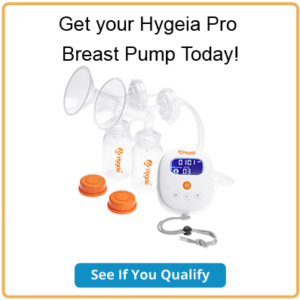Questions about whether your insurance will pay for your breast pump? You’re not alone. Many questions remain as the Affordable Care Act applies to more policies, but here’s what we know now:
- Under the Affordable Care Act, breast pumps are covered 100% by insurance for all healthcare plans that begin after August 1, 2012. This applies to both the purchase and rental of breast pumps. Your insurance company might have restrictions on which pumps they cover, or cover them at 100% only if they are purchased in-network. However, many plans cover any pump you choose by reimbursing you about 80% of the cost. So know your options.
- Ask your plan administrator to give you your breast pump coverage information in writing. Because this is still a confusing marketplace, phone calls might yield different information than a written request.
- Even if you’re not covered under the Affordable Care Act yet, many insurance companies do cover breast pumps. Almost all plans cover some type of breast pumps if deemed medically necessary.
How Do I Find Out What My Insurance Will Pay?
- Determine which pump is right for you and what models are available. If you’ll be pumping at work, for example, an internal battery is a very useful feature.
- Call your insurance company and ask for their documentation on the coverage of breast pumps. Get this information in writing, so you can take it to your point of purchase, lactation consultant, pediatrician, etc. If you are in the category of medically requiring a breast pump it’s vital to know what constitutes medical necessity. (See the sample forms at the bottom of this article.)
- Carefully read the fine print and take the steps to have the pump you need covered at the maximum amount. If your plan requires a pump to be medically necessary, talk to your lactation consultant about whether you or your baby qualifies and which pump she recommends.
- Don’t forget to consider pump rental as well as the purchase of a pump, and be sure to note your plan’s coverage of replacement parts.
- If you have questions, ask us on Facebook, or email us at socialmedia@hygeiababy.com and we will try to help. You can also share the link to your insurance information online and probably help another mom who might be searching for answers.
Medical Necessity
Even if your insurance plan doesn’t cover a pump yet, or only covers a manual pump, you can often send in forms that prove medical necessity for a pump. Ask your plan administrator for a form for medical necessity and read it carefully to see if you qualify. Then take the form to your midwife, lactation consultant, pediatrician or OB and have them fill it out. Your plan might also accept a prescription written by your healthcare provider.
I Can’t Find a Pump!
If your insurance covers a breast pump but you can’t find a DME that has stock, call your local hospital and lactation consultants to see if they can bill your insurance and carry the pump you want. Many lactation consultants can bill insurance and they are a fantastic resource to have when you need expert help. Our store locator is an excellent resource as well. Type in your zip and select 500-1000 miles to see retailers in your greater geographic region. Often insurance can be billed from a neighboring state.
Also, don’t forget WIC. If you don’t know if you qualify, double check. The peer counselors are amazing resources and often know a lot about where to get breast pumps and you might qualify for one of their rental pumps and breastfeeding support.
Don’t Forget!
As of 2011, breast pumps and supplies were deductible as medical expenses on your taxes, so be sure to keep the receipt for the pump and any replacement parts! Talk to your tax preparer about how to deduct the cost, and what other breastfeeding supplies qualify for the deduction.


